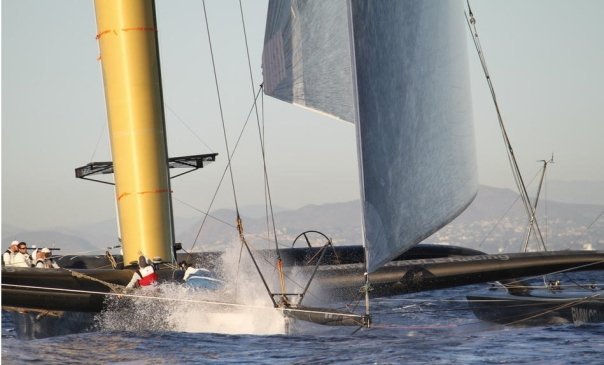Scott H. Ferguson

Naval Architect, Owner, Scott Ferguson LLC
UM NAME BSE ’85
BIO: I have spent the last 30+ years in design and engineering roles and the last 18 years with my own company focusing on Grand Prix Mast Design primarily using carbon fiber composites. A good portion of this work has been with America’s Cup teams, Volvo Ocean Race teams, and TP52 teams. The last three America’s Cup campaigns I worked with Oracle Team USA. I am taking this America’s Cup season off and diving into some other pretty cool projects and leaving some time for fun things like Moth sailing.
WHY DID YOU CHOOSE UM NAME?
I chose NAME because I grew up loving to sail and being on the ocean. I had no idea it would lead me down the path of high tech America’s Cup boats but it did, and what a ride it has been! Right out of college I wanted to learn more about boats and building so I took a job with a small boat manufacturing facility doing some basic design and engineering work. Then after a brief stint with Harken learning all about deck layouts and hardware systems, I went on to work for an established yacht designer, David Pedrick in Newport, RI for a number of years. Here I was introduced to the inside of an America’s Cup Design program and learned quite a bit about the game. I was then recruited to work for Hall Spars (Eric Hall – another UM graduate) who liked my sailboat racing skills with a global understanding of yachts and engineering. Carbon fiber masts were relatively new so I spent quite some time developing new software and analysis techniques and this became my area of expertise in the years to come.
HARDEST PART OF THE JOB?
The last 10 years have been a very exciting time to be part of The America’s Cup which has gone from heavy 25 ton slow monohulls to nimble 3-ton hydro foiling catamarans capable of over 50mph through the water. The developments in wing sails, hydrofoils, and mechanical systems are at the cutting edge when it comes to sailboats. These have been exciting times but also lots of uncharted territory for design and engineering. Probably the hardest part of the job is managing the unknowns and a willingness to take some risks. Often we learned more from the failures than the successes. The highlight and at the same time the hardest part of my career-to-date was being part of the Design Teams for The America’s Cup win in 2010 and 2013.
ADVICE FOR STUDENTS:
Be willing to learn a trade from the ground up. Work for a builder or try to build what you design with your own hands. A good designer needs to know the practical side of the process to properly incorporate a design into reality.